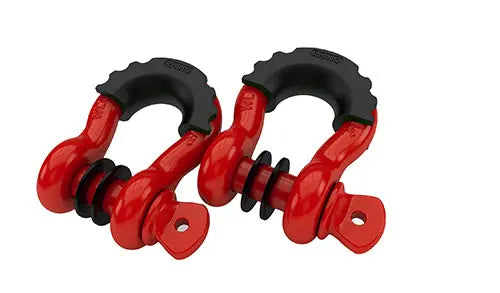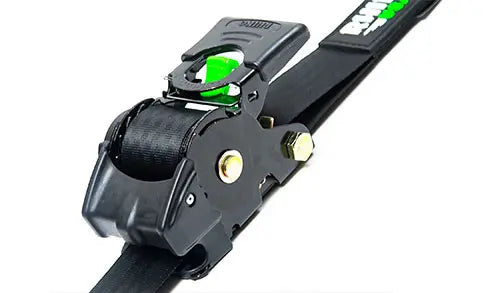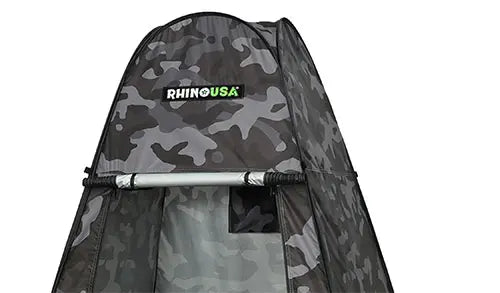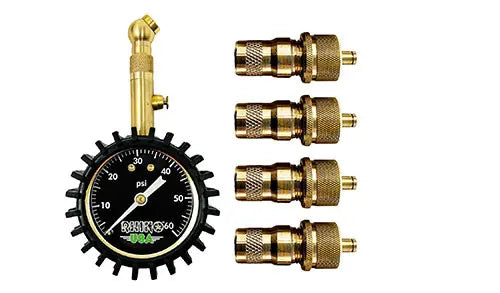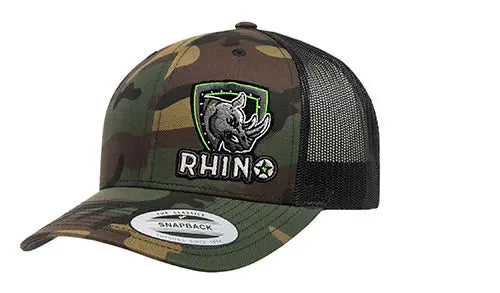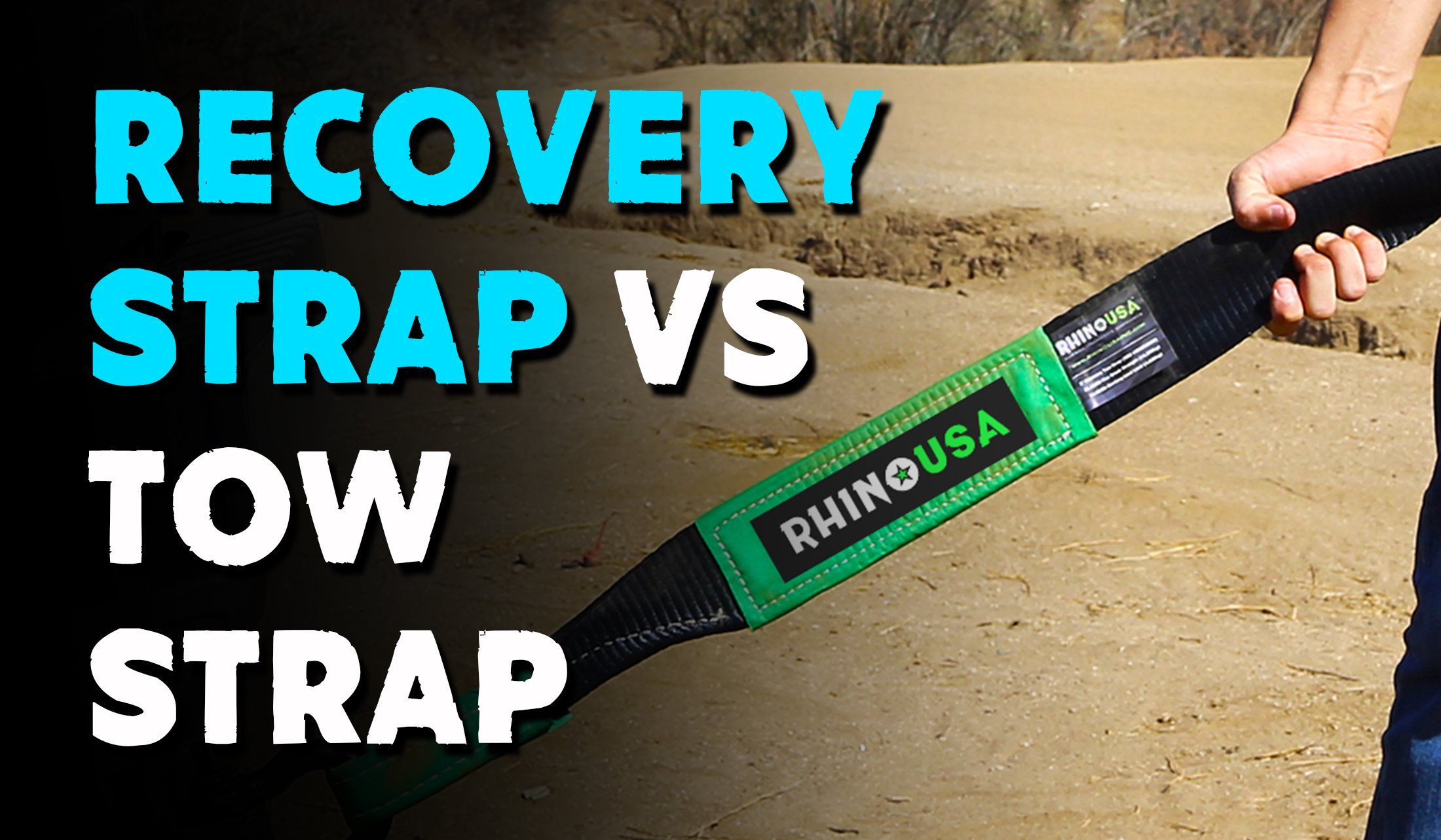
Showing You The Ropes: Recovery Strap VS Tow Strap
What is the difference? Here is all you need to know.
If you drive off-road frequently, or if you live in an area that’s often associated with terrain or old roads that aren’t really maintained frequently, tow straps and recovery straps would certainly be an essential piece of equipment in your kit. In fact, they might very well end up becoming one of the most important items to carry with you at all times, because they could help you get out of a nasty situation like virtually no other tool out there. Keep reading in order to learn more!
Tow & Recovery: what is the difference between these two strap types?
I am sure that you’ve heard of both recovery and tow straps. Most people seem to think that there is no difference between the two, but others are aware that there is actually a difference between tow straps and recovery straps.
Admittedly, they do share many things in common, but they are also quite different in so many ways. For starters, the purpose is very different. As the name might imply, a recovery strap is strong enough to “recover” a vehicle from a tough spot, for example pulling out a truck from a muddy bank. On the other hand, tow straps are excellent at towing vehicles, but not at recovering them! Tow straps are, as the name suggests, designed for towing. They will work well if you need to tow a vehicle along, but they might break if you try to pull out or recover a vehicle that’s somehow stuck somewhere. Tow straps have a very specific construction design, which relies on metal clips or hooks located at their end points. Recovering stuck vehicles might actually require a lot of strain and pressure. For this reason, it is better not to use tow straps for this particular application. These straps might actually fly off if there is too much pressure or tension on them, and they might even injure people that stand nearby. It is important to understand that tow straps should be used for their purpose only, and the best way to utilize them is to indeed attach them to tow hooks.

On a side note, tow hooks should not be attached to recovery straps, because they could actually damage the vehicle itself and worsen the situation. What makes recovery straps different and better for pulling out vehicles? Well, they are designed in such a way that they aren’t that vulnerable to extreme tension. For instance, their round slings do not have any metal pieces attached to them, and as such, they are infinitely more flexible.
Recovery straps can actually also be used as tow straps as well, unlike tow straps which won’t work for recovery application. So you might actually consider using a recovery strap for both purposes, without worrying too much about possible issues or consequences! While recovery straps can be used for towing, they are a bit more stretchable, and therefore, not as easy to control on the road. In the optimal scenario, you would have towing and recovery straps ready to be used if needed, because each strap design is actually optimized for its specific function. When using a recovery strap to get a stuck vehicle free, ensure that it is hooked up correctly using a soft shackle, d-ring shackle, or shackle hitch receiver.
Link To Product: Rhino USA Recovery Tow Strap
Understanding Load Capacity: Recovery Strap vs Tow Strap
When it comes to choosing the right tool for your off-road adventures, understanding load capacity is paramount. Both recovery straps and tow straps have specific weight limits that dictate their safe and efficient use. Let's break down this crucial aspect to help you make an informed decision:
Recovery Strap Load Capacity: The Power of Stretch
Recovery straps are engineered with elasticity to handle sudden jolts and pulls. Their load capacity is often rated based on the maximum force they can withstand while stretched. It's crucial to choose a recovery strap with a load capacity that surpasses the weight of the vehicles involved in the recovery operation. This ensures the strap can absorb the shock of sudden tugs without snapping or breaking.
Tow Strap Load Capacity: Steady and Solid
Tow straps, on the other hand, are designed for steady towing without the stretch characteristic of recovery straps. The load capacity of a tow strap is typically specified as its maximum straight-line pull strength. When choosing a tow strap, consider the combined weight of the vehicles being towed to ensure the strap can handle the load safely and efficiently.
Recovery straps do not have hooks at each end. This is because they are actually not designed specifically to tow, but to actually assist with extraction, giving the vehicle a minor running start to facilitate the project. This is quite important because harder jerking motions during the extraction of a stuck vehicle could actually lead to some vehicle issues. For instance, it might be possible to cause damage to it or other equipment.
On the other hand, kinetic recovery ropes are specifically designed to facilitate smaller adjustments, meaning that a strong, yet extremely controllable tug action can actually minimize recoil. This is possible due to the stretchiness of these ropes, which are specifically designed to store the kinetic energy of tugging. In other words, they absorb the impact of motion, so it doesn’t affect the vehicles in a big way, making for a milder impact. Once fully stretched, the strap will indeed strive to return to its regular length, imparting its kinetic energy in a very controlled manner, to the vehicle that is being towed. This minimizes jerking motion, as well as enhancing the safe application of the process. Think of it as a big rubber band, stretching. It wants to get back to its original state!
Tow and recovery straps are usually made with a wide variety of materials, most commonly using nylon and polyester. In fact, you could definitely state that the absolutely most significant difference between a tow strap and a recovery strap lies in the flexibility of the fabric used. The reason why these materials are so popular is that they are quite flexible and stretchable. Towing, pulling, and recovering vehicles requires a certain amount of flexibility and stretch, not only to prevent damage, but also to facilitate the process as a whole.
Our recovery / tow straps are designed to be used for both recovery and towing. The poly/silk fabrication is much stronger so it’s ideal for recovery uses and the loops or “eyes” offer more flexibility than traditional straps that have hooks already attached. Rhino USA recovery straps are lab tested and have a best-in-class pull rating, capable of up to a 40,320lb break strength.
In conclusion, the most important thing to consider when working with tow straps and recovery straps is to gain an accurate understanding of what you are exactly dealing with, so you can use the right strap, the right way for the right situation. Using these straps improperly is not only bad for your vehicles, but it can of course also damage the straps themselves, resulting in a necessary waste of money and resources! Make sure to check out our top-rated recovery gear backed by a lifetime warranty, so you never have to buy twice!
FAQ's
How size recovery tow strap do I need?
Rhino USA's recovery tow straps come in three different sizes: 2" x 20', 3" x 20', 4" x 30'. For most recovery situation involving a 4x4, Jeep, car, truck, or similar, the 3" x 20' strap is more than capable, with a break strength over 31,000lbs. For recovering anything larger or heavier than a truck or Jeep, we recommend purchasing the 4" x 30' recovery two strap, with a break strength over 40,000lbs
- Choosing a selection results in a full page refresh.


